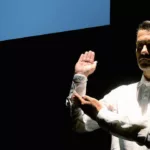Healthcare is going digital. Everyone from digital medical records to greater automation of personalization to enable greater doctor and patient interactions. But, healthcare, as an industry, is huge and what is happening today in terms of technology is a drop in the ocean.
This means that there are enormous opportunities for distruptive technologies to evolve and take shape within the healthcare industry. It seems like a great opportunity for entrepreneurs to develop new markets while doing an enormous amount of good.
Traditional tech has helped to create better productivity results and more efficiencies in a number of areas. The same benefits, when applied to the care of the sick, can only mean great benefits for everyone involved; doctors, patients, and ultimately, the entrepreneur, can all profit from using technology to create a better user experience in medecine.
The health care industry uses some of the most advanced technology when it comes to scientific breakthroughs, research and methods to treat sick patients. Nonetheless, when it comes to basic doctor-patient interaction, technology is heavily underutilized. There is a vast opportunity for tech-enabled health care businesses to make their way into the industry – if done correctly.
A valuable function of businesses in the telehealth market is putting convenient, personalized and compassionate care at the patient’s fingertips. This industry has abundant opportunities to apply new technology to the traditional patient-centric methods of health care that have proven to be successful in the past. Take, for instance, the traditional house call.
According to GlobalData study, the worldwide telehealth and telemedicine market is forecast to grow at a compound annual growth rate of 14 percent between 2011 and 2018. According to the World Market for Telehealth (2014) report, the number of patients using telehealth services will rise from less than 350,000 people in 2013 to 7 million in 2018. Furthermore, revenue for telehealth devices and services is expected to reach $4.5 billion, up from $440.6 million in 2013.








